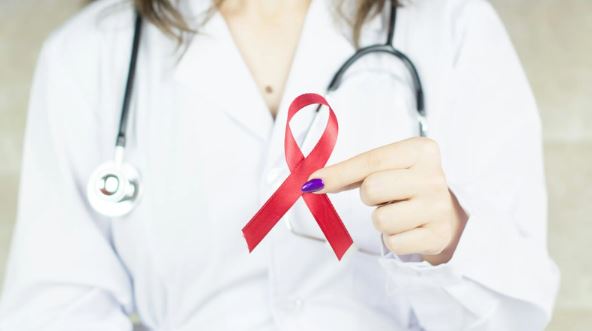The Human Sciences Research Council (HSRC) released the key findings of the Sixth South African HIV Prevalence, Incidence, and Behaviour Survey (SABSSM VI) across the country.
The SABSSM VI survey, conducted between 2022 and 2023, aimed to maintain surveillance of HIV infection and behaviours in South Africa, evaluate the progress of the South African national HIV and AIDS, STI, and TB Strategic Plan, and monitor HIV indicators for national and international reporting.
The survey’s key objectives included estimating HIV prevalence and incidence, viral load suppression, and exposure to HIV-related services among adults and children.
It also assessed progress towards the 2030 UNAIDS 95-95-95 targets, HIV drug resistance, and the relationship between social and behavioural factors, intimate partner violence, and HIV infection.
The UNAIDS 95-95-95 targets aim for 95% of people who are living with HIV to know their HIV status, 95% of people who know that they are living with HIV to be on lifesaving antiretroviral treatment, and 95% of people who are on treatment to be virally suppressed.
The survey revealed that the Western Cape had the lowest lowest HIV prevalence (7.4%) in 2022 and second lowest in 2017 (8.6%). This translates to 540,000 people living with HIV (PLHIV) in the Western Cape, which was a decline from 560,000 PLHIV in 2017.
HIV prevalence in the province was higher among those aged 25– 49 years (10.8%), for both females (14.6%), and males (5.8%). HIV prevalence was also higher among those residing in rural formal or farm areas (8.5%). In addition, HIV prevalence was higher among females (9.0%) compared to males (5.6%).
The Northern Cape had the second-lowest HIV prevalence at 8.9% in 2022. This meant 120,000 PLHIV in the province, which is 21,000 more PLHIV compared to 2017.
HIV prevalence in the province was 3.3% among those aged 15–24 years overall, and higher among females (5.0%) than males (1.8%) in this age category. Among those aged 25–49 years, HIV prevalence was 12.6% overall, and higher in females (14.9%) than males (9.6%).
The data revealed Mpumalanga to have the highest HIV prevalence at 17.4% in 2022.
This translates to an estimated 890,000 PLHIV in the province. HIV prevalence in the province was 7.8% among youth aged 15–24 years overall, and 1.5-fold higher among males (9.8%) than females (6.3%) in this age group.
The survey further revealed that among adults aged 25–49 years, HIV prevalence was 26.4% overall, and 1.6-fold higher among females (31.9%) than males (19.9%).
Overall, the survey found that in 2022, an estimated 7.8 million PLHIV in South Africa. The national HIV prevalence was 16.3% among adults aged 15 years and older, translating to an estimated 7.4 million adults aged 15+ years living with HIV.
Among adults aged 15+ years, HIV prevalence was nearly twice as high among females (20.3%) as compared to males (11.5%). By race, HIV prevalence was highest among Black Africans (19.8%), followed by Coloured (5.1%), White (1.3%), and Indian/Asian (1.2%).
Viral load suppression (VLS) among people living with HIV aged 15+ years was 81.2% overall, 82.9% among females and 77.6% among males. VLS was lower among younger populations aged 15–24 years at 70.1%.
95–95–95
According to the data, South Africa’s National Strategic Plan for HIV, TB and STIs set targets that by 2025, 95% of all PLHIV will know their HIV-positive status; 95% of all people diagnosed with HIV will receive sustained antiretroviral therapy (ART); and 95% of all people receiving ART will have VLS.
How many people are diagnosed with HIV?
The survey revealed that in South Africa, 90% of PLHIV aged 15 years and older knew their HIV status: slightly higher among females (92%) than among males (85%). Individuals were classified as being diagnosed or knowing their HIV status if they self-reported being HIV positive and/or on ART, or if they had a detectable antiretroviral (ARV) in their blood.
How many are on HIV treatment?
Among PLHIV aged 15 years and older who knew their HIV status, 91% were on ART, and this was similar between females (91%) and males (90%). The data said the use of ART was defined as having detectable ARV, or self-reported use of ART.
How many people are virally suppressed?
It was reported that 94% of PLHIV aged 15 years and older who were on ART were virally suppressed.
How is South Africa dealing with HIV stigma?
Overall principal investigator of the study, Professor Khangelani Zuma, stated that HIV-related stigma persists as a significant issue among individuals aged 15 years and older.
“Addressing stigma is essential to improving the quality of life and well-being of people living with HIV. However, of the six questions related to HIV-related stigma, the majority yielded results that indicated that most people held positive attitudes toward people living with HIV,” said Zuma.
While the information released is not all gloom and doom. The data also showed there was an overall decrease in HIV prevalence across South Africa since the establishment of the survey in 2017. South Africa is closer to achieving the 95–95–95 treatment targets. The survey also found that 50% of all males aged 15–24 years had been circumcised by a medical professional.
The survey achieved a household response rate of 80% and an individual interview response rate of 94.1%. It was revealed a total of 47,766 participants provided blood specimens for HIV testing, resulting in a testing response rate of 62.7%.
Professor Zuma said this indicated that the results suggest advancements in the fight against the HIV epidemic in South Africa.
“This is evidenced by a stabilisation of HIV prevalence, ageing epidemic, a reduction in HIV incidence, enhancements in HIV treatment outcomes such as increased rates of ART coverage and viral load suppression (VLS) in line with the 95-95-95 targets,” Professor Zuma said.
The study has since recommended key actions that can address the HIV epidemic as a public health threat in South Africa by 2030 which include continuing intensive programmes focusing on reducing new infections among adolescent girls and young women.














